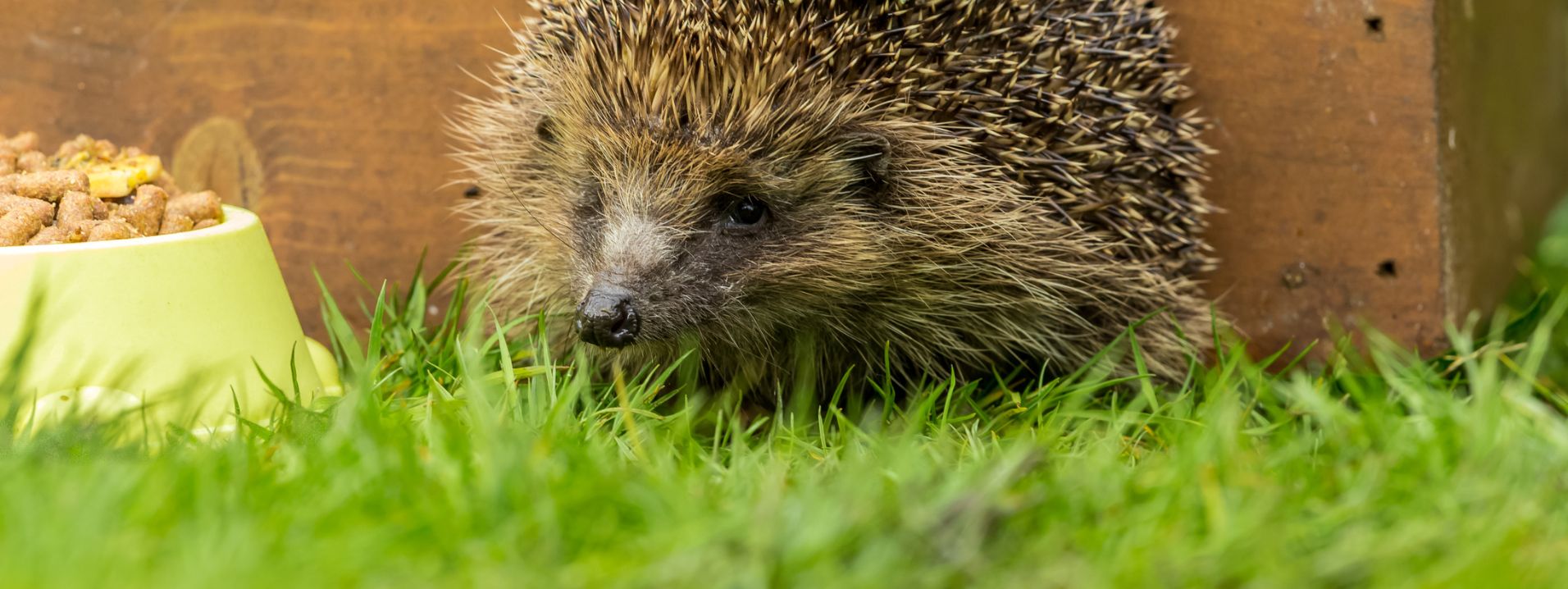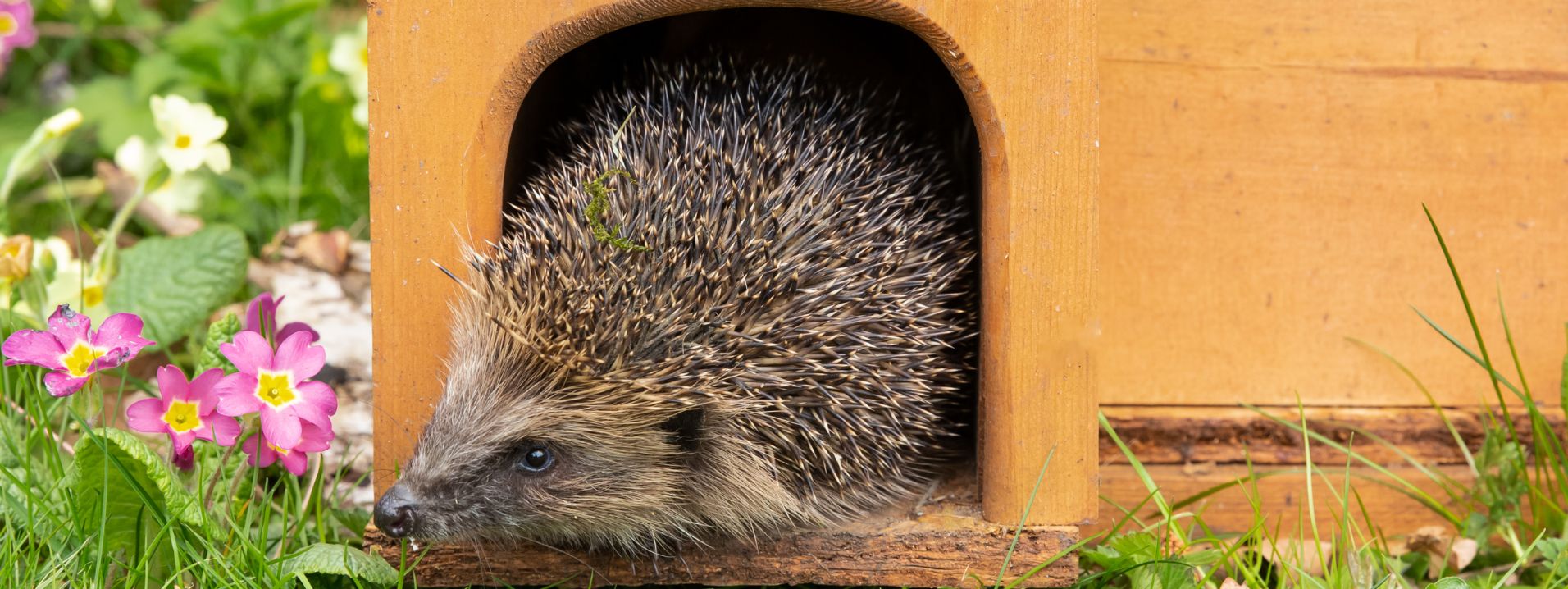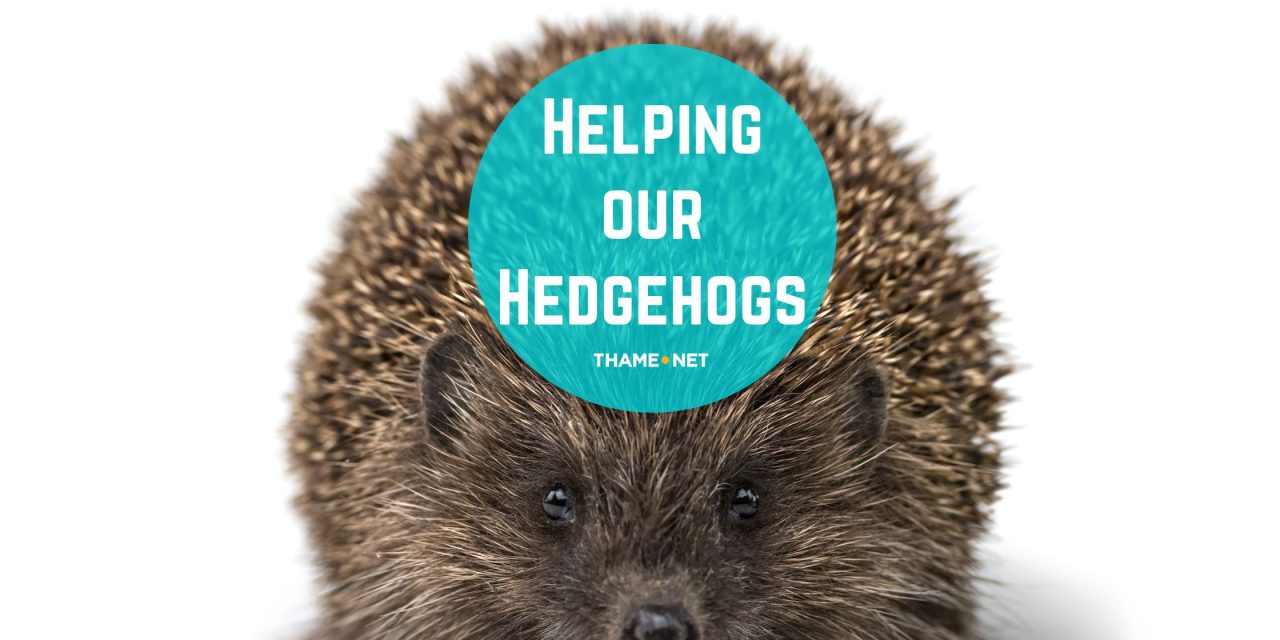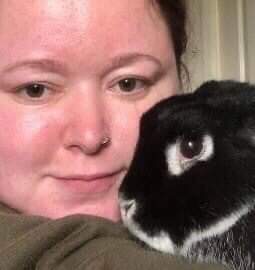It is that time of year again, we are all looking to neaten up our gardens if we haven’t already, remove any debris, de-weed and mow our lawns. We may even be fixing up some of our fence panels and filling in holes.
I’d like to ask you to please take extra care when removing any debris; you may have a little prickly friend visiting and nesting down under the wood, bricks or leaves. Please lift your items up gently and have a peak before potentially disturbing them. They may also have some little hoglets, also referred to as pups, urchins, kits or piglets, that shouldn’t be disturbed, otherwise their mother may abandon them or eat them. Mother hedgehogs will feed their babies until they are around 8 weeks old, before they venture out on their own.
Sadly the hedgehog population is in a huge decline, we need to help look out for our late night garden visitors. It is estimated that the hedgehog population has fallen by 30% – 50%, since 2000. They do usually prefer the countryside, hedgerows and woodlands, but sadly with more places being built on, where they would usually set up home, they are looking for more urban areas to reside in.
How we can help
We can help these vulnerable creatures by setting up suitable places for them to settle down, that won’t be disturbed, with easy access points around the area for them to access food, water and safe areas without being out in the open for other potential dangers.
Hedgehogs usually start coming out in the evening when the sun goes down, they start re-emerging from their winter hibernation, if they hibernated (not all will have) April/May time. It is very unusual to see a hedgehog out in the day and if you do you should approach it to see if they look bright and healthy, if so they may be a mother hedgehog out collecting nesting and food for the summer, otherwise you may need to give them a helping hand by putting them in a secure box with a suitable amount of access to air but so they can’t climb out, as they are surprising good climbers. You then need to take them to the local wildlife rehabilitation centre so they can be checked over and cared for if needed.
Please handle hedgehogs with care and only pick them up if they are in danger; sitting in a busy road, ill or out in the day and needing to be taken to the wildlife centre, for care. It is best to wear some good, thick gloves like gardening gloves, and scoop them up gently with both hands, supporting the whole hedgehog. Do not worry about the hedgehog passing on any fleas, hedgehogs are prone to fleas but they are host specific fleas so they can’t survive without a hedgehog host. Ticks are also quite common behind hedgehogs ears, once attached to their host they shouldn’t have any interest in you, but in some bad cases it may cause the hedgehog to become anaemic – but please don’t attempt to remove these ticks yourself, as often part of the tick stays in place and can cause more issues.
A Hedgehog’s Diet

Hedgehogs are insectivores and should be encouraged to eat wild insects and hunt for themselves, the fresh insects they catch are usually full of nutrients, please do not put out dried mealworms as these aren’t great and your hedgehog will likely devour them but lack of nutrition can leave them very poorly. So the best way to give them access to bugs is to add lots of flowers to your garden and supply some fresh water in a heavy shallow bowl for them too. Please never put out milk for them as they are in fact lactose intolerant and again it can make them very unwell.
You can however put out some hedgehog food or even certain types of cat and dog food, these include some wet meats (no fish content) and some cat or dog biscuits too, you may even hear them munching away. If you are to put food out then Autumn and winter time is the best time to feed them, as if they haven’t yet hibernated or have woken up early, the ground is often frozen and they can’t access a lot of the food they would usually help themselves to.
Hedgehog Safety

Please make sure there is a safe space for your hedgehogs near the feeding station, as it may also attract other animals. You can use bricks or wood to create a safe space or hedgehog house. You want your house to allow a hedgehog in with a couple of inches either side, the hedgehog house must be solid and un-moveable for larger animals and contain a swirl/spiral system inside so that a larger animal’s paw can’t reach in and swipe the hedgehog and pull them out. You can add in some clean leaf piles for bedding, these may need checking and having a clean out now and again, please only do this in the late evening when your hedgehogs have already left and are likely out hunting.
One last thing is to make sure you haven’t got any bags, barbed wire, litter or anything your garden visitors can catch themselves on. If you have a sports goal, most nets are removable as animals such as hedgehogs, snakes and foxes are prone to get caught up in them, so please make sure they are folded up and out of the way if left unattended.
Always check your bonfire before lighting, too many hedgehogs have had severe injuries or very sad deaths due to fires.
Hedgehog Highways
A great way of helping hedgehogs stay out of danger is to give them a helping hand for access routes. They are good diggers and good climbers, but the less time out in the open the more likely they will be able to survive. Those holes in the bottom of your fence you’ve been thinking about fixing up, please consider keeping it open for hedgehogs to use or even creating one for them, it is best to do it under a hedge or somewhere under cover, if you have dogs though, if you could create something where you dog won’t be able to access, even behind a shed, I’m sure they would be very grateful for it!
You can even buy little hedgehog highway signs to go over the gap/hole; this can also make sure you have a smooth edge, so could be sanded down so they can’t get easily scraped or caught. If you have linking gardens to your neighbours you could all work together putting in a full hedgehog highway system around your gardens.
November, December Time
Autumn and winter is a crucial part of helping these hedgehogs and keeping an eye out to see if they are large enough to hibernate at the start of November they should be weighing around 500g and the start of December 600g to have enough body fat to be able to survive hibernation, otherwise this is a good time to get them to the wildlife rehabilitation centre too.
Thank you for looking after our garden friends, I’m sure they will appreciate it and you may even get something from it too.
One of Thame’s nearest Wildlife hosptial with visiting areas are based in Haddenham.
Tiggywinkles, The Wildlife Hospital Foundation / Registered Charity: 1200460
You can also find out more about the new Hedgehog highway project that 21st Century Thame are working on in our area too.











